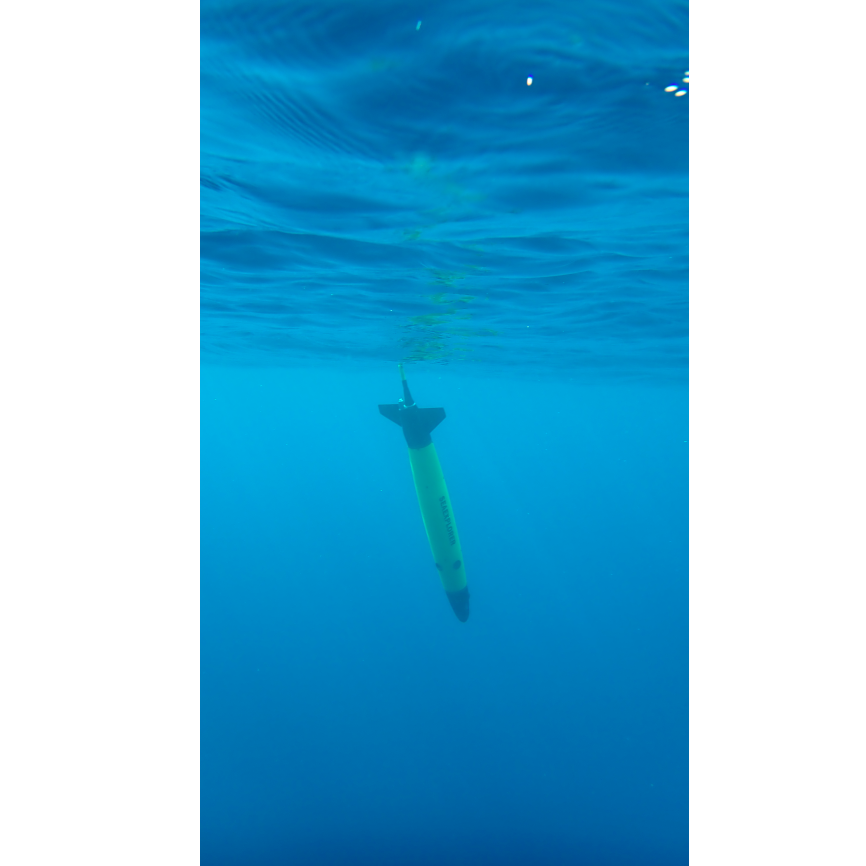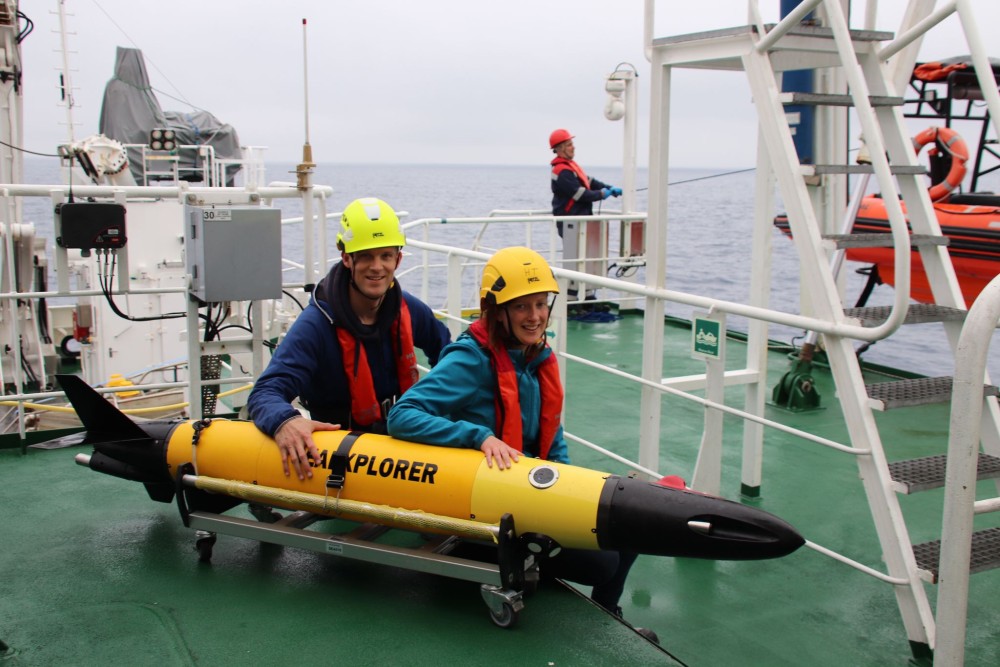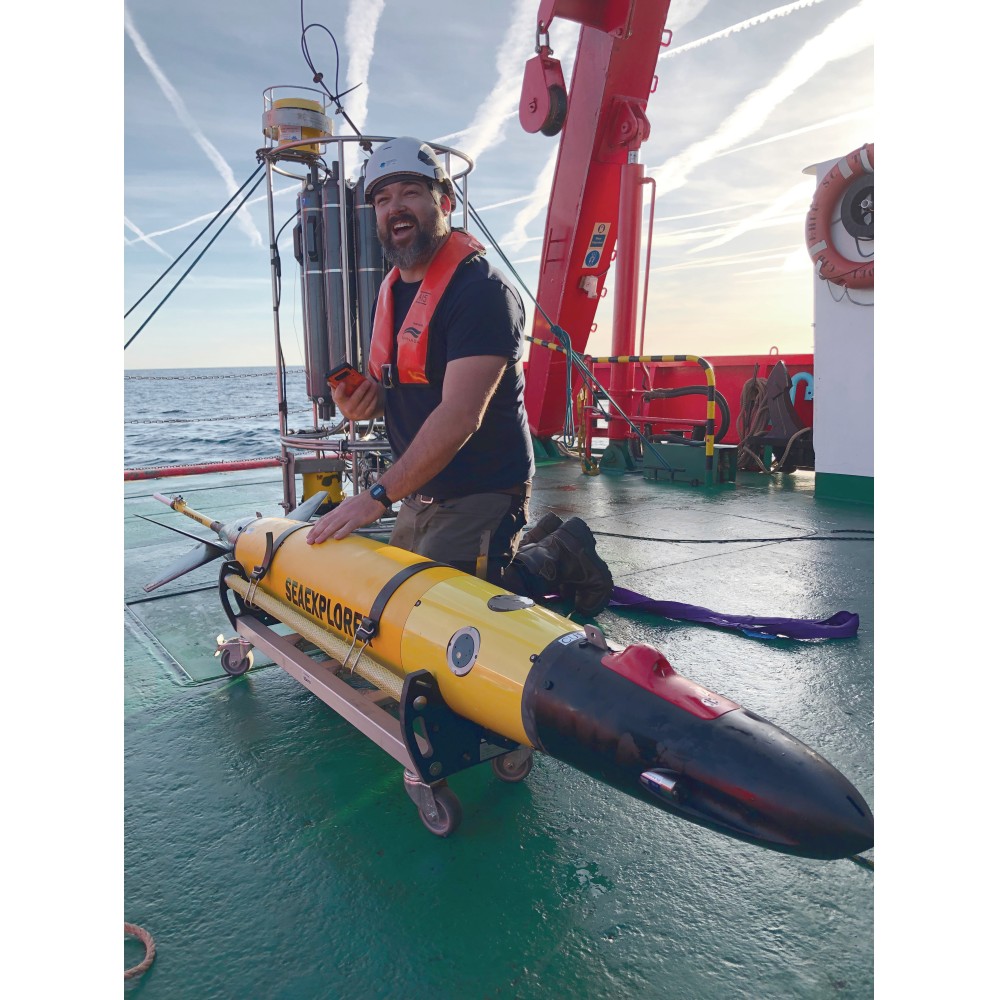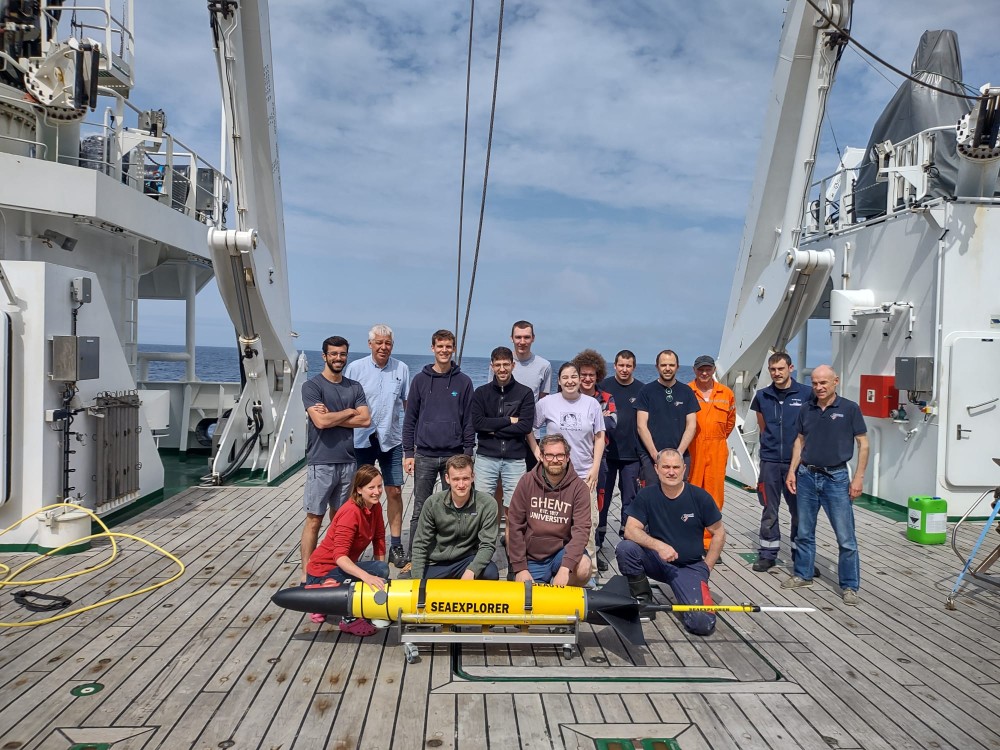A glider is a torpedo-shaped long-endurance autonomous vehicle, which undulates through the water column along a pre-defined path. By changing its volume through expanding and shrinking a bladder, Glider Yoko* (a SeaExplorer by Alseamar) changes its buoyancy, thus inducing a vertical motion. Combined with the controlled movement of the internal battery and the fins in the back of the glider, all this actuation allows controlling the speed and direction of the vertical and horizontal motions.
As such, Glider Yoko is able to follow a pre-determined track of waypoints along which it continuously moves up and down the water column (up to a water depth of 1,000 m), doing V-shaped movements. Every time the glider reaches the surface, it sticks out its antenna on the back and communicates with the shore control station over satellite for updated information and/or data offload to shore.
The low power consumption of the vehicle, coupled with the ability to pilot it from anywhere in the world (with an internet connection), makes Glider Yoko ideal for remote operations. Hence, these vehicles are often used in harsh polar environments or in the deep sea where they can operate for months on end. They are perfectly suited for the observation of large-scale oceanographic features in the water column. The low-logistics nature of the vehicle allows it to be deployed by a single technician from almost any size ship.
* Glider Yoko was donated to VLIZ by VUB in 2021. Subsequently, the Glider was completely refurbished with new sensors and a new battery pack.
Technical details
- Physical dimensions
- Length: 2 m + 1 m foldable antenna
- Diameter: 0.25 m
- Weight: 60 kg
- Operational Parameters
- Depth rating: 1000 m
- Speed: 0.5 knots nominal
- Endurance: Variable - up to 25 days depending on sensor configuration
- Battery: Lithium-Ion rechargeable
- Charging time: ~20 hours
- Communication
- Iridium
- Radio
- Scientific payload
- Oceanographic set-up:
- Pressure sensor
CTD RBR Legato³
ECO Puck FLBBCD - EXP for turbidity and Chlorophyll-A
Dissolved oxygen sensor JFE Rinko AROD-FT
ADCP Nortek AD2CP
- Trace metal set-up with collector cups
- Oceanographic set-up:
All of this robot's features can be found in the Glider Yoko specification sheet.



